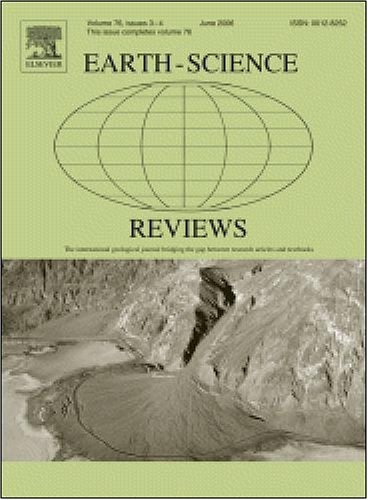Why are readily soluble phytoliths more resilient?
IF 10.8
1区 地球科学
Q1 GEOSCIENCES, MULTIDISCIPLINARY
引用次数: 0
Abstract
Phytoliths are plant born opal-A amorphous silica bodies that form in living foliar tissues. They return to soil within plant debris and are considered by biogeochemists and soil scientists as an important source of dissolved silicon (DSi) in the soil-plant system due to their relatively high dissolution rate. However, they are also used in other disciplines as microfossils to reconstruct paleoenvironments because of their stability over millennia. Thus, some phytoliths contribute massively to the continental export of DSi to rivers and oceans, hence to the global Si cycle, while other phytoliths persist in soils and sediments. Here, we reviewed various factors affecting the phytolith resilience. Aside from phytolith properties (specific surface reactivity), their resilience can be enhanced by soil processes such as surface passivation through Al loading or redox-dependent Fe coating, and aggregation. Soil and sediments may thus contain two pools of phytoliths: fresh and stabilized phytoliths. The first reservoir is an important DSi source, contributing actively to the Si soil-to-plant cycle and the DSi transfer to rivers and oceans. Yet, Si can be retrieved from the global Si cycle through phytolith entrapment in aggregates. This process contributes to the second pool of stabilized phytoliths that protect them against dissolution. We further propose that two processes drive phytolith entrapment: (1) inheritance in aggregates having a nucleus of phytoliths bearing plant debris; and (2) formation of microaggregates associating phytoliths, organic and mineral colloids through surface interactions. This emerging vision opens new routes to understand the global biogeochemical cycle of Si and phytolith residence induced by soils aggregation process. Thus, we propose that upcoming novel research on the geochemical stabilization of soil phytolith resilience should quantify the pool of phytoliths within soil aggregates in various ecosystems. Finally, it needs to further assess the factor affecting their storages and phytolith residence such as soil properties (e.g., moisture condition and depth), microbes, and extreme climatic environment (e.g., humidity, temperature, and rainfall). This will benefit us to better understand the life cycle of phytoliths in soil and sediments and its role as microfossils in paleoecology and phytolith radiocarbon dating.
求助全文
约1分钟内获得全文
求助全文
来源期刊

Earth-Science Reviews
地学-地球科学综合
CiteScore
21.70
自引率
5.80%
发文量
294
审稿时长
15.1 weeks
期刊介绍:
Covering a much wider field than the usual specialist journals, Earth Science Reviews publishes review articles dealing with all aspects of Earth Sciences, and is an important vehicle for allowing readers to see their particular interest related to the Earth Sciences as a whole.
 求助内容:
求助内容: 应助结果提醒方式:
应助结果提醒方式:


